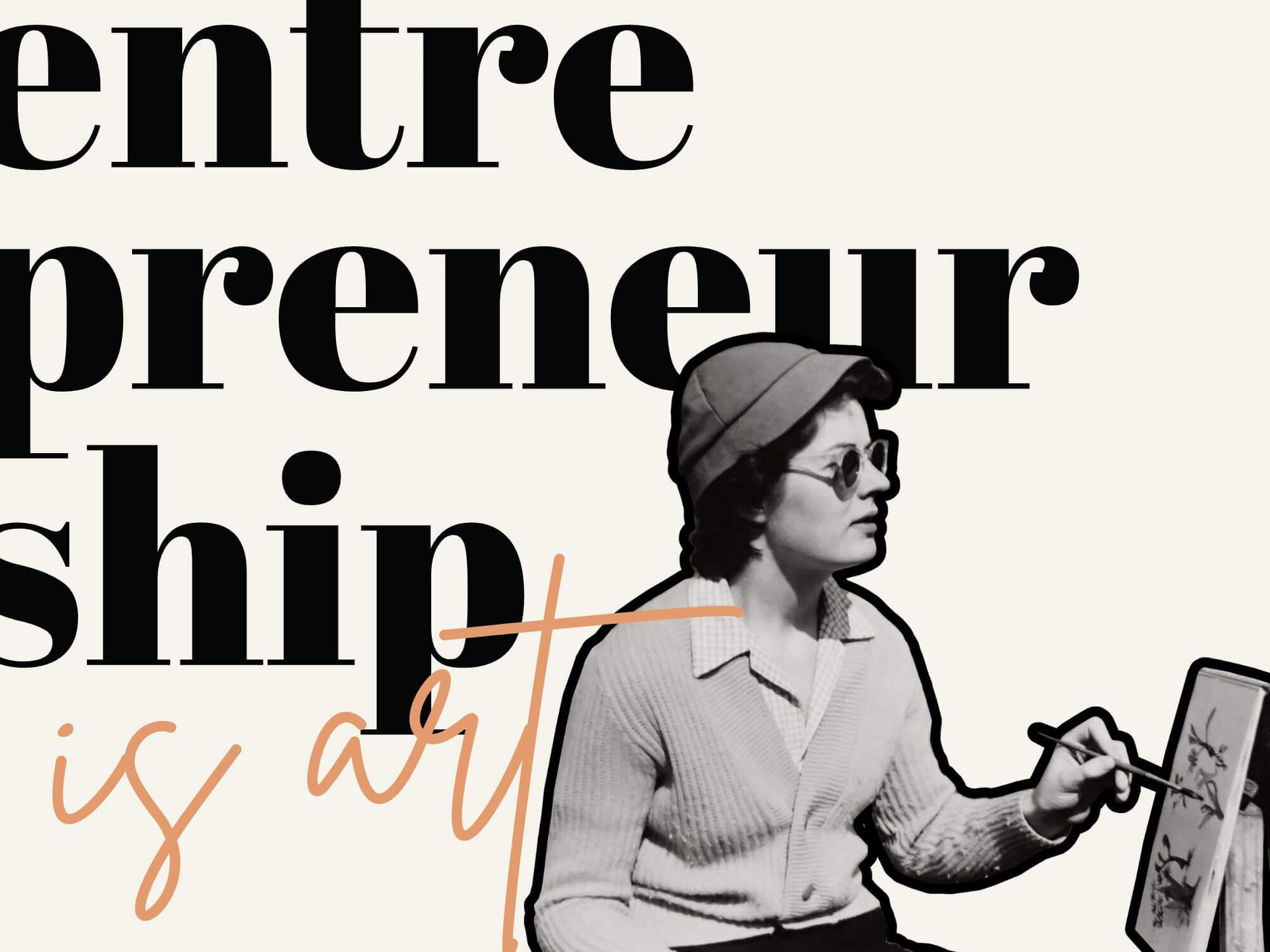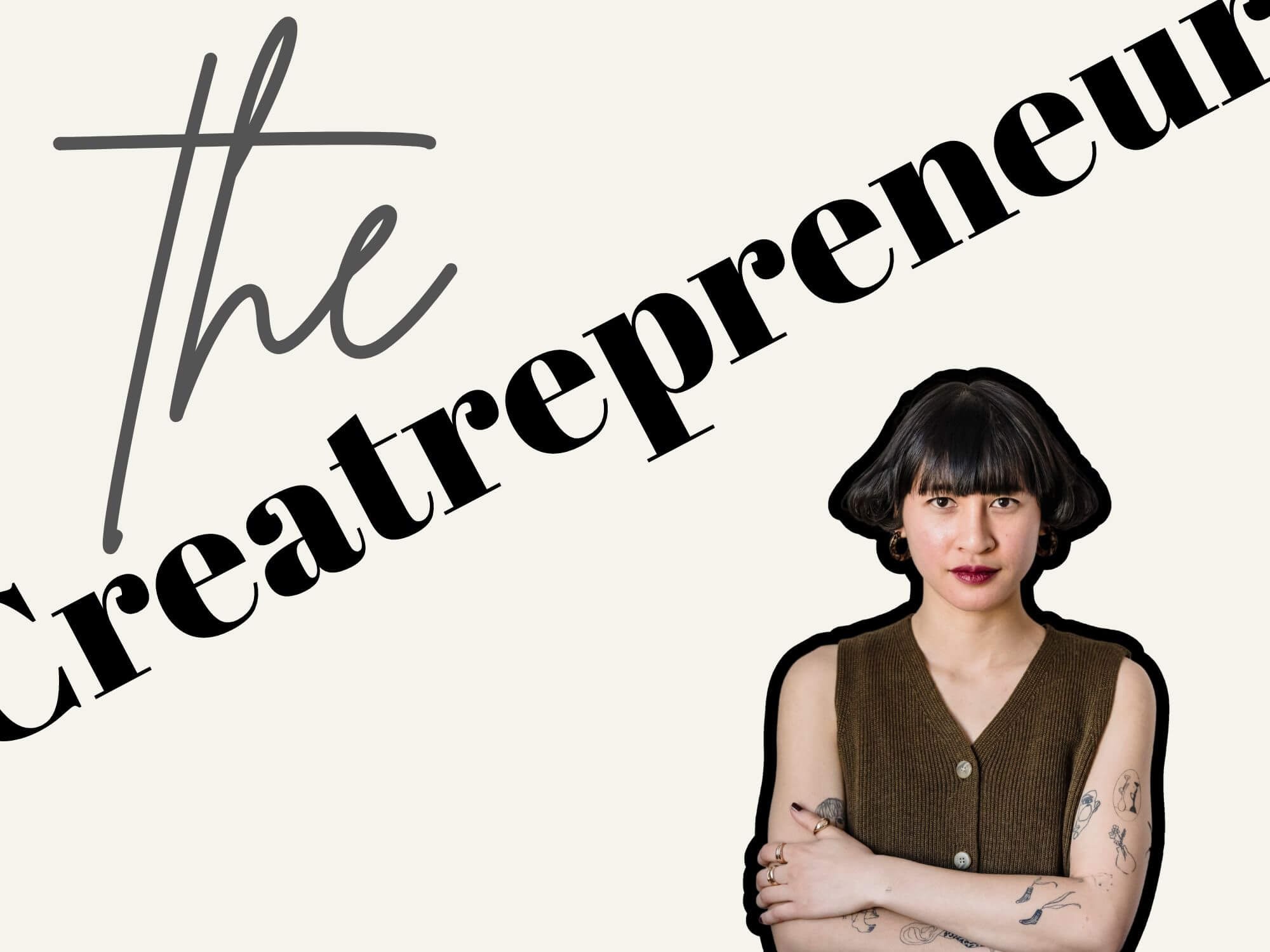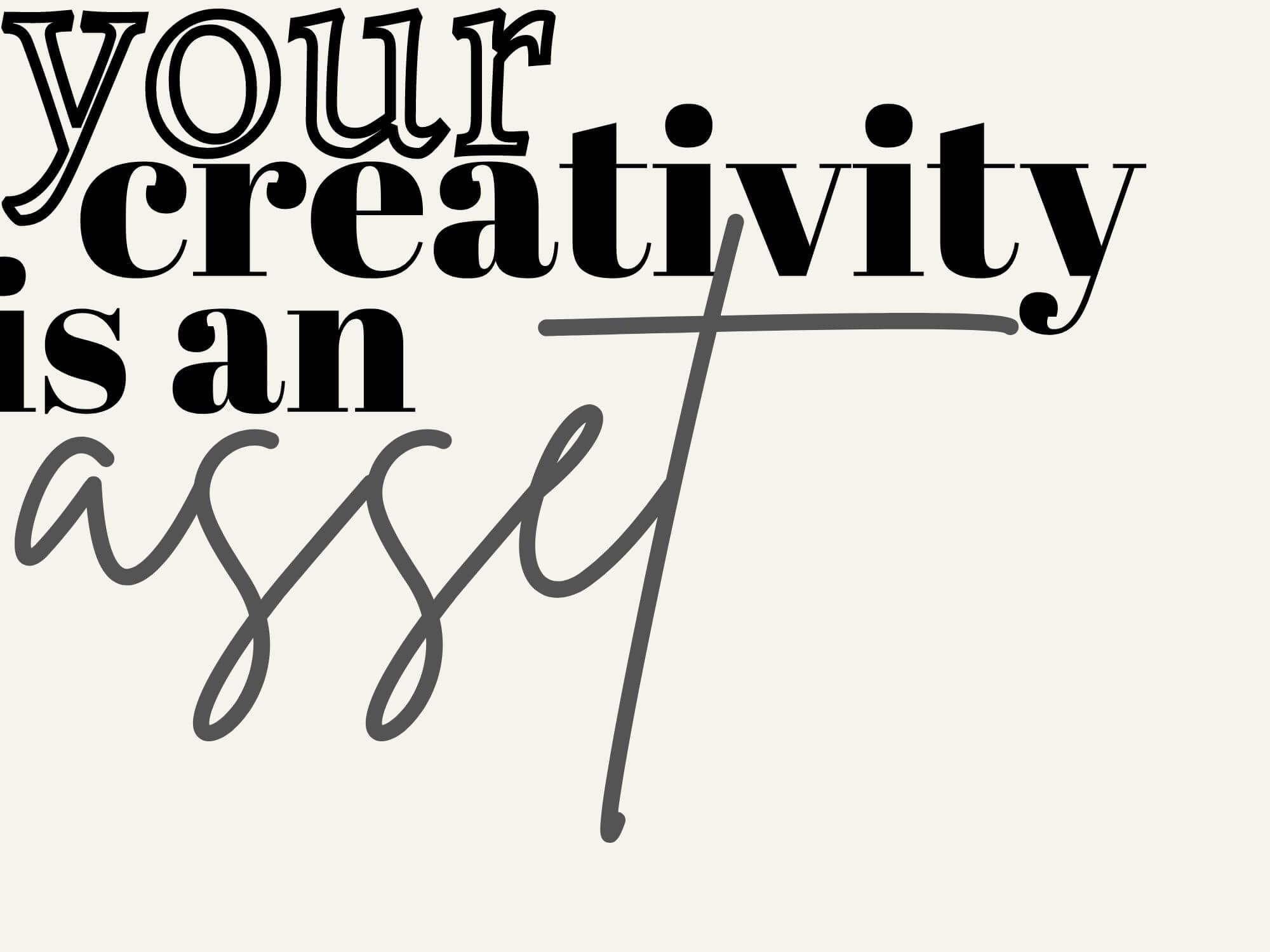Creative Entrepreneurship 101 (the complete handbook)
I’m an artist, musician and traveler with a passion for blogging. Like you, making stuff is my default mode. But what didn’t come natural was sales, business and monetizing all that stuff.
I didn’t know about creative entrepreneurship. I thought it was something I’d just sort of figure out when the timing was right.
Well, I was wrong.
So this post covers everything I wish I knew before stumbling my way through failed projects, artistic headaches and towering question marks.
Now let’s do this!
What Is Creative Entrepreneurship?
Creative entrepreneurship is the act of turning your creative expertise or passions into products, services and/or content with the intent of growing a brand and making money.
Put another way, it’s profiting from your creativity.
And IMO, modern entrepreneurship is a creative act. So this is a natural relationship happening here — the artist and the tycoon.
But is it worth it? Let’s look at some pros and cons.
Creative Entrepreneurship (pros)
Financial independence
Work and life flexibility
Make money from your passion
More creativity in your life
More control over your income
Deep sense of personal fulfillment
Unique opportunities and networking
Creative Entrepreneurship (lows)
Work can be infrequent
Takes a while to be successful
Running a business is hard
Self doubt issues
Dealing with rejection
Dealing with clients
More complex taxes and insurance
Who Is Creative Entrepreneurship for?
Whatever your creative domain is, you can monetize it and turn it into a business.
So who is creative entrepreneurship for exactly? Anyone who does creative work:
Artists
Writers
Musicians
Jewelry makers
DIYers and crafters
Dancers and performers
Fashion lovers or designers
Creative coders or tech gurus
Illustrators and web designers
Content creators and bloggers
Photographers and filmmakers
Explore more:
➤ Is A Blog A Business?
Creative Entrepreneur Traits
Given the ups and downs of creative entrepreneurship, it takes a certain personality to make it work.
Here are some traits I often see (and like to work on myself):
Has patience
Okay with taking risks
Naturally optimistic
Has a growth mindset
Comfortable in the unknown
A natural problem-solver
A drive to help others
Independent and self motivated
Loves what they do
Examples of Creatrepreneurs
You don’t need to look far to find a creative entrepreneur. But here are a few people who come to mind:
Walt Disney
Jack Conte
George Lucas
Thomas Alex Norman
Jim Henson
Beyoncé
Sofia Amoruso
Sorelle Amore
Austin, from Make Pop Music
Steve Jobs
Sean Kitching
Ryan Reynolds
Rick Rubin
John McLucas
Arianna Huffinton
George Washington Carver
Rihanna
Become A Creative Entrepreneur (6 steps)
1. Create A Plan
Planning is the intention and strategy you put to your goals and creativity.
This adds clarity and focus to stuff, increasing your likelihood of success and your sense of control.
While chance and serendipity exist, planning sets the stage for those things to happen.
“Luck is what happens when preparation meets opportunity.”
A plan is a map for your creative business. Here’s how I like to do things:
Define your ‘why’
Clarify your goals
Create a business plan
Target audience research
Identify potential bottlenecks
Market analysis
Budgeting and finance stuff
Define your offer(s)
A marketing and content plan
This first step will organize your ideas and give you a clear path forward. You don’t need to have everything figured out, but a little bit can go a long way.
2. Create Content
It’s modern life. And to become a creative entrepreneur, you need content.
The biggest caveat is if you’re only using platforms like Etsy or Gumroad. But this doesn’t build your business quite the same.
Content is how you build awareness, trust and authority. It’s how you build your audience and create an actual brand.
Content also helps fine-tune your voice and reveals who your audience is and their values, interests and pain points.
You know, all the important stuff.
So how do you start? By just starting.
Hit record on your phone, tweet your ideas, engage with people, start a personal blog…
Just start.
Here are some tips to make things easier:
Go where your audience spends most of their time
Choose a content type you’re most authentic with
Focus on just one platform and content type
And remember, your content doesn’t need to be complex or perfect either. Imperfect action always beats perfect inaction.
All you need is your phone or computer and maybe a free program like CapCut or Canva (for templates and prettier edits 🙃).
3. Get A Website
A website tells the world you’re serious. It’s also your main hub and a creative asset.
It’s a way for people to find you and contact you. It builds SEO value, generates leads, houses your portfolio and more.
“Websites are practical. But they’re also easy, super creative and pretty fun to design.”
I use Squarespace for most of my websites. They’re powerful, reliable, great for SEO and intuitive to use. They also have lots of artistic templates and are hyper-focused on creative entrepreneurs.
So if you’re serious about this whole creative entrepreneurship thing, have a website. It’s an investment in your brand.
I also drive the majority of my traffic through blogging. So if you want to do the same, you’ll need a site.
And if you think about it, spending around $30/month is a pretty low business expense for what you get — a professional internet storefront with essential infrastructure.
Explore more:
➤ Why I Use Squarespace
4. Create An Offer
An offer is your creative expertise or value packaged into a solution for your audience.
This is the cashflow and lifeline for your creative business.
(and also why starting with content is so helpful — you’ll know exactly what resonates with your audience)
If you’re struggling to find ideas, you can use community threads like Reddit, Google search or ChatGPT for brainstorming. Study other offers that inspire you and reverse engineer them for inspiration.
But the best option is to simply solve your own problems and then sell your solution. Just make it specific and compelling.
Here are some different ways to package your offer:
Consulting
A digital product
Physical products or merch
Services
Teaching (workshops, courses)
5. Attract ‘Good’ Traffic
There are influencers who have millions of followers but struggle to get by.
Then there are small businesses with just a few hundred followers making 5-6 figures a month.
So what gives?
One potential factor is the type of audience they’re attracting.
You don’t need a lot of traffic to make a lot of money.
The type of traffic you’re attracting is far more important than the number. For example, which audience would you rather have?
50 readers on a post about the “best artwork for a doctor’s office”
1,000 readers on a post about “100 painting ideas for beginners”
Hands down, I would choose the top audience. They’re clearly ready to buy and very likely business owners or in management positions (i.e., they have money).
So think about the type of audience you want to attract when choosing keywords and creating content.
But don’t make all of your content buyer-focused either (that’s spammy). Balance, marketing strategy and intention are key.
6. Learn How to Sell
You could have the best product ever and amazing traffic to boot. But if you don’t know how to convert that audience, you’ll struggle.
This was my greatest pain point.
So now I’m following a more strategic funnel pattern with my content:
Top-of-the-funnel (TOFU)
to build awareness
Middle-of-the-funnel (MOFU)
to build trust
Bottom-of-the-funnel (BOFU)
to make sales and convert
Loyalty
to create fans (think memberships, repeat buyers)
For example, this post is a TOFU pillar post. And I’m not trying to sell anything. Most readers are just curious to learn more about creative entrepreneurship.
They’re not looking or ready to buy something.
So my intention is to provide a ton of upfront value and teach you everything I know about creative entrepreneurship. My hope is to inspire you and give you confidence.
I’ve included lots of internal links that point to other TOFU or MOFU articles on my site. Eventually, the right audience will find their way to my BOFU content. But I’m not pushing any of that here.
Good marketing is patient and intentional. A BOFU audience generally takes time to build. Brand takes even longer.
Of course, you could use paid ads to skip parts of this process. But that takes technical finesse and money. So I like to focus on free methods, like:
Building a newsletter
Creating blog posts
Posting on social media
Starting a podcast
Doing collaborations
Engaging in the comments
Doing in-person events
Marketing and selling is a skill. So take some courses, watch some videos and get some skin in the game.
You’ll get there eventually.
But that’s all I’ve got for you here! So if you’re stoked to take a few more steps in your entrepreneurial journey, check out my post on how to start a creative business.
Otherwise, thanks for reading!
Later ✌️
Creative Entrepreneurship (faqs)
-
Here are some business ideas for creative entrepreneurs:
Etsy shop owner
Blogger
Influencer
Creativity coach
Selling handmade goods
Video editor
Filmmaking studio
Photography agency
Fashion designer
Interior design
Web designer
Indie illustrator
Artist for ____
Musician
-
The biggest difference is a creative entrepreneur uses their creativity or artistic skills to build a product or a business.
A general entrepreneur may not.
-
The difference between successful and unsuccessful people is successful people simply never quit.
It's boring and even trite, but simply showing up, staying consistent and being patient are the secrets.
Have long-term time horizons, realistic expectations and a love for the process. And keep improving.
Stay the course – your future self is waiting.
-
Imagine a world without creativity. Awful, right?
Now imagine business, products and services without innovation or artistic finesse.
Also awful.
Suffice to say, the marriage of creativity and entrepreneurship is essential for innovation and infusing human elements into business.
Entrepreneurship allows creatives to pursue their artistic visions and change the world in the most aesthetic and share-worthy ways.



